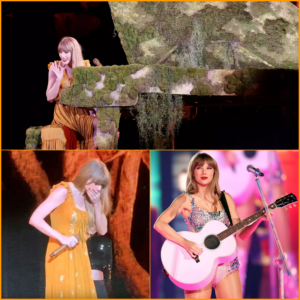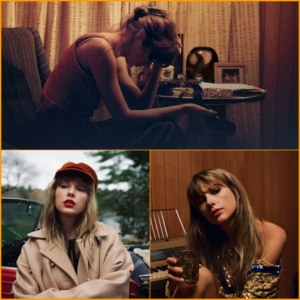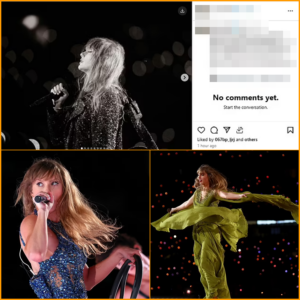Overnight, sales doubled at Burning Wagon Designs after actor Lily Gladstone wore one of its outfits to the Time100 Next event held earlier this month in New York.
Actor Lily Gladstone attends the Time100 Next event on Oct. 24 in New York. She is wearing a two-piece outfit by Burning Wagon Designs, a company owned by Osage women.
The locally owned company was created about a year ago by Osage Nation citizen Libbi Gray, a leading advocate in the Missing and Murdered Indigenous Women movement, with two of her four daughters. They never expected movie stars to be wearing their clothing in international publications.
“I always told my kids that if you do the right thing and respect people, it will come back to you. So, we’re over here, doing good for our tribe, family and community, and good things are happening now,” Gray said.
Gladstone, an Academy Award favorite for her portrayal of Mollie Burkhart in “Killers of the Flower Moon,” is using her influence to promote Indigenous designers. She crossed paths with Gray’s family during the film’s production.
An Indigenous model features a dress made by Burning Wagon Designs, owned by Osage Nation women.
Gray was part of the Osage Nation effort with filmmakers to ensure authenticity of the tribal culture and history. The great-grandfather of her husband, former Osage Nation Chief Jim Gray, was among the Reign of Terror victims featured in the film.
During an Osage dance at Grayhorse, one of Gray’s daughters gave a scarf to Gladstone as a gift. The print is of yonkapin, a wild lotus root considered a food delicacy among Osage people. That ended up as a pocket square worn by actor Leonardo DiCaprio in the October issue of British Vogue.
During the photo shoot, the photographer wanted a better visual link between the actors. In a spur-of-the-moment suggestion, Gladstone pulled the Burning Wagon Designs scarf from her purse and fit it into DiCaprio’s lapel. The company is credited in the magazine.
Apparel from Burning Wagon Designs, including the dress in the photo, is intended to be worn by a wide consumer base. The company is owned by Osage Nation citizen Libbi Gray and two of her daughters.
“Even though it’s a small little peek of the scarf, it’s very exciting to see,” Gray said.
Then, Gladstone wore a two-piece, scarlet-colored mazeska print created by Burning Wagon Designs to the Time100 celebration. Mazeska are Buffalo nickels that look like polka dots in the design.
The photo was published internationally, including the U.S. edition of Vogue.
The outfit came into Gladstone’s possession by chance. She participated in a local fashion show of Indigenous designers in September that included Burning Wagon Designs. During the event, Gladstone had a clothing mishap requiring a last-minute replacement.
T-shirts are among selections from Burning Wagon Designs, which is owed by Osage Nation citizen Libbi Gray and two of her daughters.
When Gladstone offered to have it cleaned and returned, Gray refused and told her to keep it.
“I didn’t do anything anyone else wouldn’t have done,” she said. “The priority was her and make sure she had what she needed. That’s just what we do.”
Burning Wagon Designs is a family affair from start to finish on every product. One daughter handles manufacturing the print material, and others have a hand in the pattern design, sewing, marketing and distribution.
“We’re all from different age groups and of different heights, weights and aesthetic preferences,” she said. “We come together with our ideas and work out together how to do it.”
At each stage of the production, Indigenous people are involved, including models of the clothes and photography for the advertising and social media.
“All hands who touch our clothing before the customer are Indigenous,” Gray said.
The first products were simple hair scrunchies, but it quickly ballooned into other items, from edgy sweatshirts to elegant dresses. The most popular is the mid-calf, high-waist pencil skirts.
The family is able to keep up with the orders and its social justice efforts. Like Gray, the daughters are involved with issues around domestic violence and missing and murdered indigenous people.
“We’re a small company, so everything we make goes right back into the business,” she said. “The company allows us to be flexible with our other work. For me, if I am working on a bad case, I can come back to sewing something pretty. Or, I can sew for a while and take a break to go on a search.”
Design inspiration often comes from their shared history, like 1960s ribbon work made by Gray’s grandmother or century-old broad cloth in a shell dress.
“Everything we do has meaning to it,” Gray said. “It goes back to our Native roots.”
Burning Wagon Designs products can be found at burningwagondesigns.com.
News
Taylor Swift’s Wild Fantasies about Travis Kelce During Eras Tour Performance
Taylor Swift has once again captured headlines, this time for a playful onstage moment during her Eras Tour in Australia that has fans buzzing about her rumored…
Travis Kelce Lefted Taylor Swift Mid-Tour to Fly Back to Las Vegas!? What’s Really Going On Down Under?
Travis Kelce, the Kansas City Chiefs tight end, made a swift exit from Australia, leaving behind his girlfriend Taylor Swift, to join his teammates for a party…
Taylor Swift ‘swallowed a bug’ by accident during Chicago eras tour show, said it was ‘delicious’…
Taylor Swift had a memorable moment during her Eras Tour stop at Soldier Field in Chicago, where she candidly shared an unexpected incident with her fans. The…
Taylor Swift’s Golden Globes Mystery Unveiled: Why Did She Skip the 2023 Awards?
Taylor Swift, the beloved singer-songwriter, was notably missing from the star-studded 80th annual Golden Globe Awards, raising eyebrows among fans and industry insiders alike. Despite being nominated…
Taylor Swift’s Emotional Message to Melbourne Fans Leaves Everyone in Tears! What Did She Say After Entertaining 300K People?
Pop sensation Taylor Swift recently wrapped up three sold-out concerts at the Melbourne Cricket Ground as part of her Eras Tour, captivating nearly 300,000 fans over the…
Taylor Swift’s dad gives sandwiches to fans in the middle of Eras Tour Sydney show
Taylor Swift’s dad, Scott Swift, handed out sandwiches and fruit to fans during the Eras Tour concert in Sydney, Australia, Friday. In a video shared by a concertgoer, Papa…
End of content
No more pages to load











